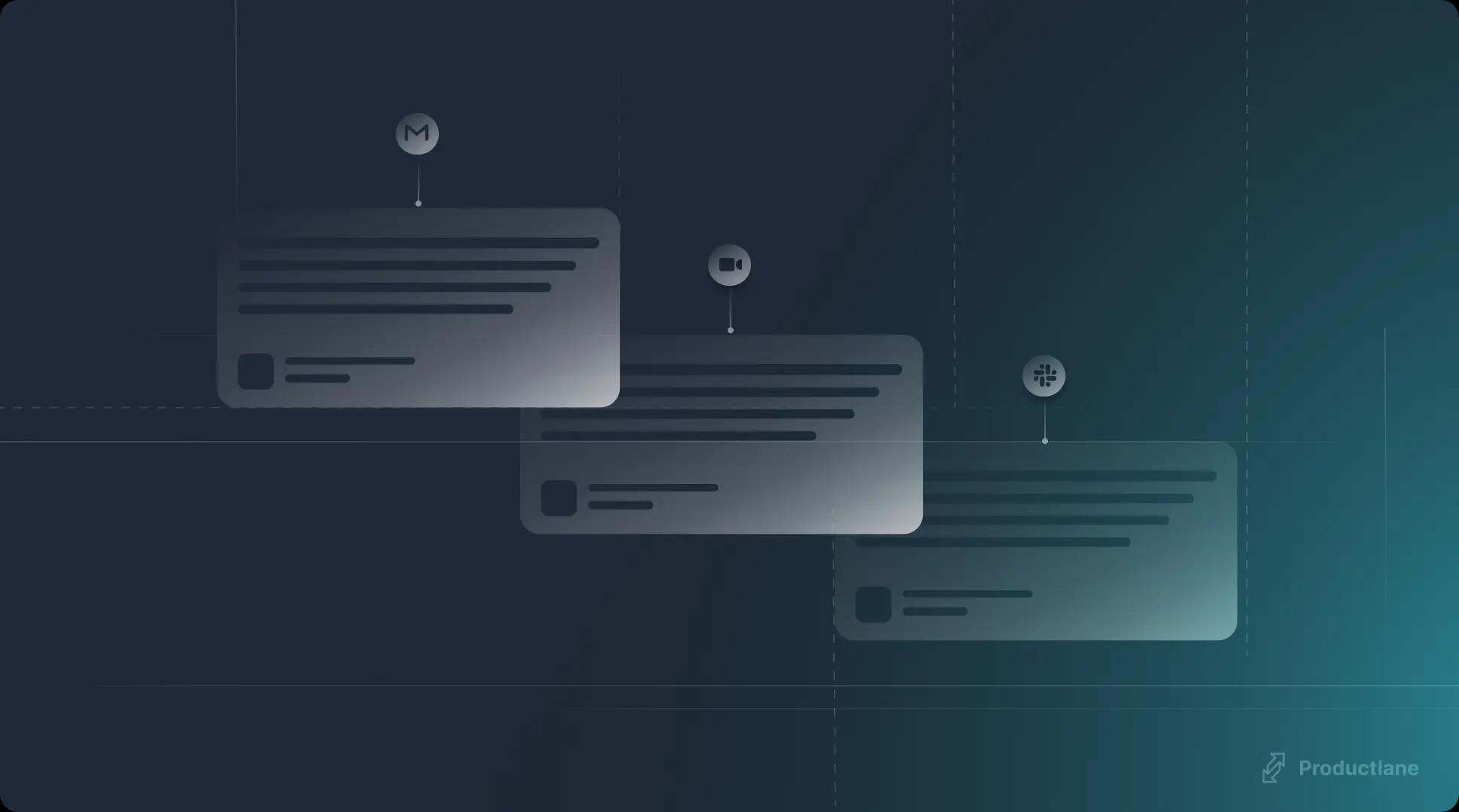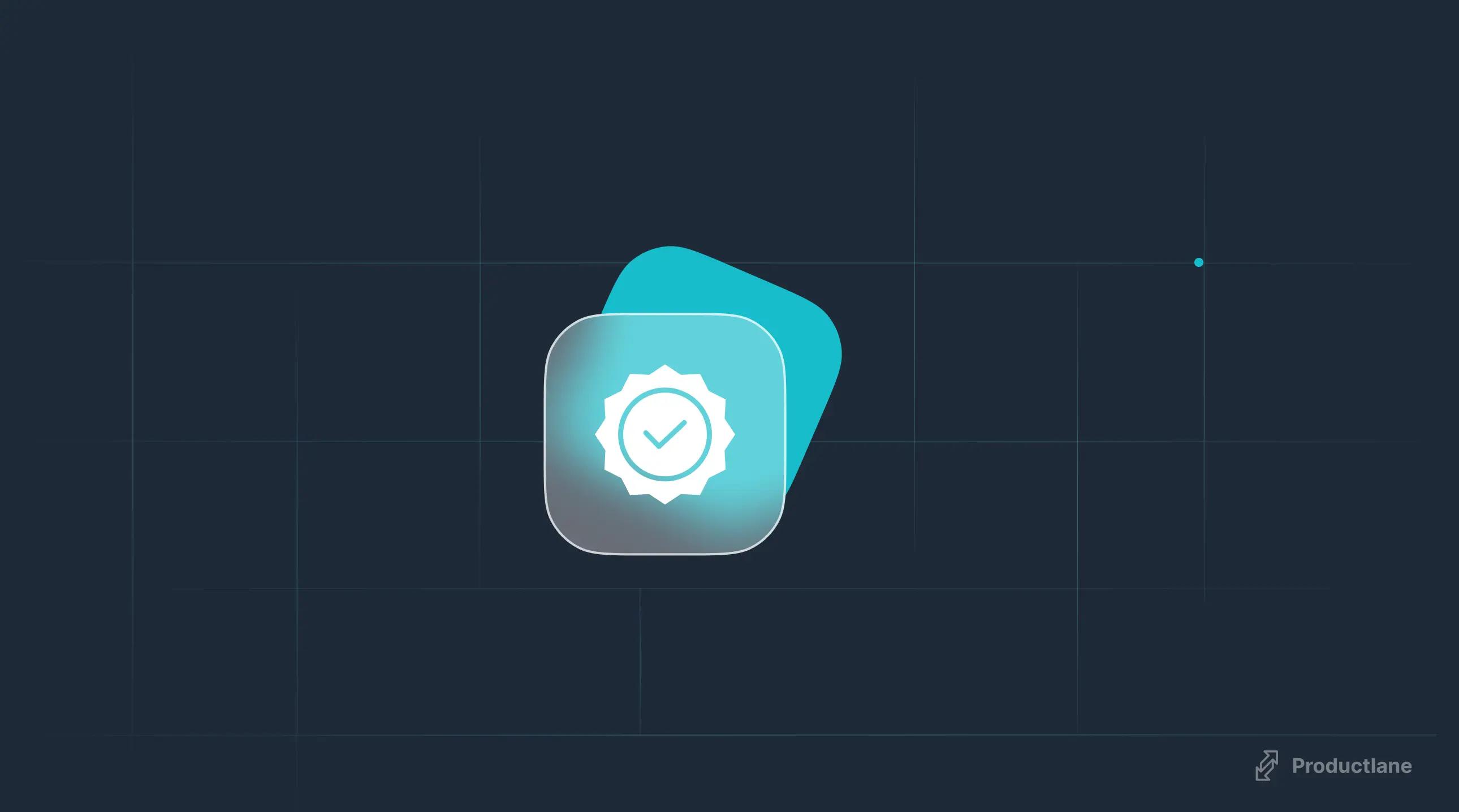Before starting Productlane, we talked with countless companies like Stripe, Linear, Cron, Superhuman, to find out their secrets behind building world-class products.
Opinionated products that are powerful but feel very simple at the same time.
All these companies had certain product discovery habits in how to collect feedback, plan their product work, and decide which features to build next.
We identified many common patterns among them and implemented them into Productlane. So more companies can adopt these habits easily. We would like to highlight the key learnings in this article.
What is product discovery?
Product discovery is the first of the three main stages in product development: Discovery, Design, and Delivery. It’s a continuous process of talking with your users and understanding new problems worth solving.

If done right, great discovery helps you build the simplest solutions to the biggest problems. It helps you choose the right bets before going heads down, shipping things that turn out to be not used often and clutter your product, mess up your codebase, and slow you down in the long run.
It’s a continuous process that allows organizations to stay ahead of the competition, identify emerging opportunities, and uncover new user needs and problems while keeping a high shipping pace.
The discovery habits of world-class companies
We identified the following patterns that all these companies had in common:
1. Talk with users every week
Companies who build world-class products talk with their users often. Y Combinator recommends doing that at least once a week. Stripe wants everyone in their product teams to talk with users directly. Airbnb changed the Product Manager role into a Product Marketing role that talks a lot with users. It’s a common theme that emerged in software companies in recent years.
You can do many things wrong here, so be careful and read the Mom Test beforehand or other guides on how to talk with users.
In short: Don‘t show people a design and ask if they would like that, try to find out what they do all day and where you could save them time or solve a problem for them.
2. Record user calls, also from Sales and Customer Success
To get all those insights together, find insights later on, and make them visible to your team, it‘s important to set up a system that records all user calls.
They should be in one searchable place and include recording from customer success or sales.
3. Store feature ideas to identify problem areas
The best companies don't build everything their users say. They balance feedback with vision and gut feeling but keep track of every request to realize quickly when things pile up and identify new problem areas.
To ship fast and only build really simple and opinionated products, they keep only things in their issue tracker, where they are 100% sure that they want to build that, and keep everything else in another place.
This is one of the main usecases we built Productlane for. So companies can have a place for these requests – we call them opportunities – and can connect user research and feedback with them.
Later you can turn those quickly into Linear issues and projects as soon as they want to build them.
 With Productlane, you can store feature ideas and connect all research and feedback from customers with it
With Productlane, you can store feature ideas and connect all research and feedback from customers with it
4. Use your own product
Most world-class software companies use their own product often. It helps you identify pain points quicker, and especially in the beginning, get 10x more feedback if your whole team is a user.
By using your product daily, you discover bugs, usability issues, or missing features much faster than when you need to ship it to your user first and ask them for feedback.
5. Ship fast
Shipping fast allows these companies to validate ideas and quickly gather feedback from real users. By getting their product into the hands of real users as soon as possible, they can learn what works and what doesn't, iterate fast, and make imrovements fast based on actual user experiences.
Moreover, it makes your users happy. When startups deliver quickly, your users are more likely to be delighted, which leads to more user feedback, positive word-of-mouth, and loyal customers.
6. Make it easy for users to give feedback
To make it as simple as possible for users to give feedback within the tool, almost all of these companies have a feedback button very prominently in their app. See Stripes feedback widget in the image below, which is directly visible in the main navigation.
They also add a feedback button on new pages and features they want to test. Removing the barrier of giving feedback results in 2-3x more feedback from our experience, compared to a Zendesk or Intercom chat, where people often hesitate to write non-support related things.
 Stripes feedback widget
Stripes feedback widget
We also built a customizable feedback widget in Productlane to make capturing these insights as simple as possible.
 Productlane Feedback Widget
Productlane Feedback Widget
7. The whole team talks with users
In the best companies, almost everyone from the product teams talks or writes with users. Often, the engineers even do customer support to empathize more with users and fix small things right away.
Engineers and Designers have real ownership over the product, and like in the Airbnb example, Product Managers develop more into a product marketing role to align the team with sales, customer success, and users.
8. Balance user feedback with vision
As mentioned before, if you build everything your users tell you, you will quickly find yourself having bloated software that's hard to maintain and even harder for your users to navigate.
That's why you always need to balance user feedback with your vision. A vision of which really large problem you want to solve in the long-term, to see if a feature request fits in there.
Summary
These product discovery habits of companies building world-class products include talking with users regularly, recording user calls, keeping feature ideas outside the backlog, using their own product, shipping quickly, making it easy for users to provide feedback, involving the whole team, and balancing feedback with vision. The continuous process of product discovery helps companies stay ahead, identify new opportunities, and solve user problems while maintaining a high pace of shipping. Balancing both outcomes and craft is crucial for creating successful products that satisfy user needs and stand out from the competition.





